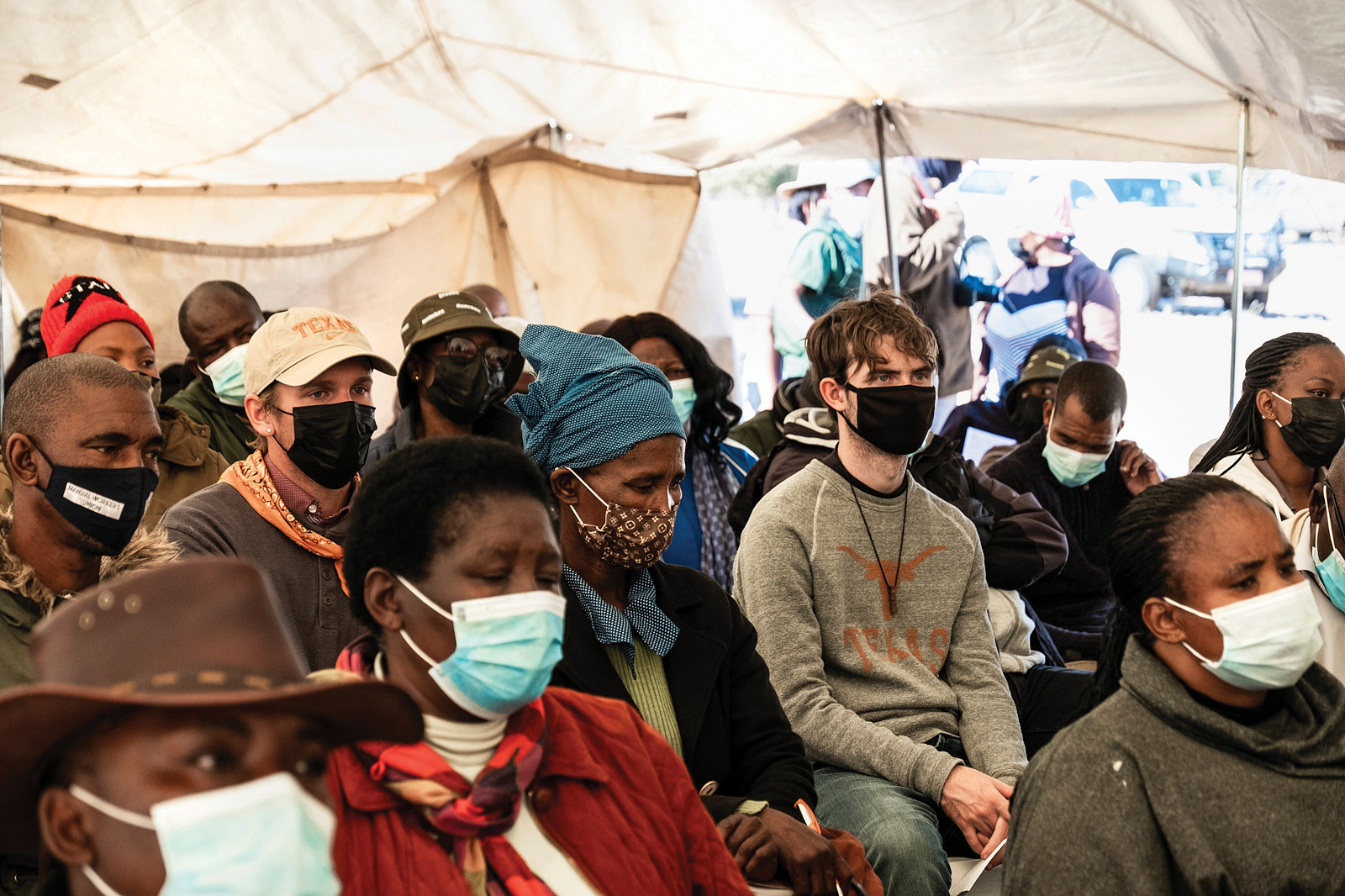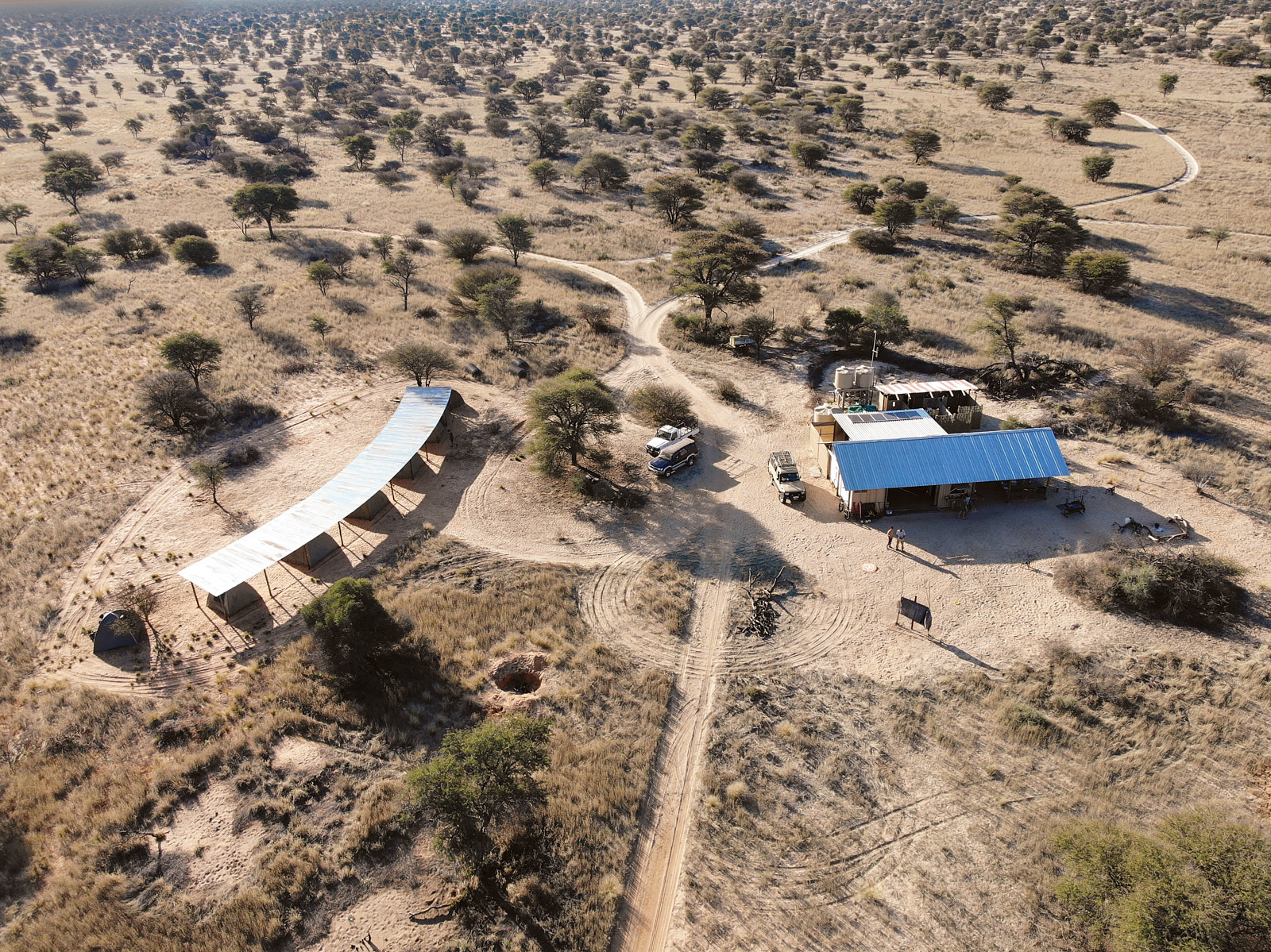These UT Sophomores Started a Company That Incentivizes Sustainability

When Mihir Bendre first arrived in Botswana over the summer, the UT Austin sophomore and vegetarian was in for a rude awakening. In that part of the Kalahari Desert, growing crops is nearly impossible. So, for every meal: wildebeest, kudu, springbok, impala (all different species of antelope that call Africa home), and on one night, mopane worms. "They were pretty bad,” Bendre says. “They had an odor to them. The game was good, though.”
For months leading up to the trip, Bendre had been living off the salad bar at Kinsolving Dining Hall. Which, incidentally, is exactly where the idea that took him to the Kalahari was first discussed.
The idea—an app to help ranchers in Botswana make data-driven decisions about grazing allocation on their land—grew from that first discussion among friends at Kinsolving into the student-run startup company Gazelle Ecosolutions. It’s taken Bendre, along with sophomores Amod Daherkar and Siddharth Thakur, across the globe, from the national Fowler Global Social Innovation Challenge competition in San Diego to six weeks of intensive research and field testing in Botswana. And most importantly, to finding an even larger solution to ecological restoration and sustainability in Africa’s Kalahari Desert.
Bendre has had a single-minded focus for the environment since he stepped foot on campus in the fall of 2021. “Last year, if any event had the word ‘sustainability’ on it, I went,” Bendre says. After one such event, Bendre met Thakur while he was skateboarding outside. When Thakur approached him about participating in McCombs’ Texas Sustainability Innovation Challenge (TSIC) later, Bendre was game. So were Daherkar and former team member Ben Breed.
But they still needed an idea to pitch. “The competition isn’t really about how hard you try. The idea comes first,” Bendre says.

Then Bendre met with geography professor Thoralf Meyer, who has been working in Africa since 1996 and has taught the university’s study abroad program in Botswana since 2012, where Meyer noticed a problem.
For most of the people in the region, ranching is the only way to earn an income off the land, where growing crops is nearly impossible. “The bitter reality is that they need to make some money off the land, and that has led to situations where land has been overstocked,” Meyer says. That leads to overgrazing, which contributes to the loss of wilderness areas in Africa and a dwindling resistance to the changing climate.
Meyer told Bendre about his dream for a tool that could calculate carrying capacity—the number of animals, usually livestock or game, that can sustainably be supported on a rancher’s land.
The moment Bendre stepped out of Meyer’s office, he called Thakur, ready for the first of many Gazelle meetings. “I just remember Mihir calls me with such enthusiasm,” Thakur says. “He goes, ‘This professor—he’s great, he’s sustainable,’ and Mihir goes on and on about how (Meyer) needs this app. I was like, ‘How are we going to code an app? None of us have ever built an app in our life.’”
It didn’t take them long to learn. “Three weeks [after that first meeting], these students walk into my office and have actually built an app,” Meyer says. “I was blown out of my chair, because I had forgotten about this.”
By then, the team of the four students knew Gazelle could become more than just a nifty idea to win a pitch competition. But the problem of actually implementing the app with ranchers loomed large. “[The ranchers] have been doing this for generations,” Daherkar says. “Why are they going to listen to some stupid smartphone app that says, ‘You need to kill three more cows?’”
That’s when Gazelle grew beyond an app to solve overgrazing for cattle ranchers. During one of many long nights, the team came to its “aha! moment.” Instead of trying to market their app to ranchers as a paid service, they realized their actual business model didn’t have anything to do with an app.


Instead, they realized Gazelle could use carbon offset projects to earn its revenue. Carbon offset projects can take many forms—planting trees, offering cleaner appliances to a community—but each project ultimately reduces greenhouse gas emissions or prevents future emissions. That reduction is measured and sold as a carbon credit to companies to “offset” their own emissions.
Their first carbon offset project became the first ever registered in Botswana in October and is projected to prevent over 214,000 tons of carbon dioxide emissions in its lifetime.
The money generated then funds the app and offers the ranchers money to use the app, which can be used offline.
“If we can put a more sustainable twist on land management, compensate the farmer who is at an economical loss, [and make] the entire operation more environmentally resilient, then we would not only kill two birds with one stone; we kill three birds with one stone,” Meyer says.
Armed with the new business model, the team won first at the TSIC in April, qualifying for the Fowler Global Social Innovation Challenge competition in June. At the national pitch challenge in San Diego, Gazelle again won first place.
The team was soon ready to take their talents past pitch competitions to the real world: Meyer’s research hub in Botswana, where Bendre, Daherkar, and Breed spent six weeks starting in July through UT’s Global Career Launch Student Internships program.
“There’s generally a distrust of the Westerner coming in because they think they know what’s best. So, we wanted to avoid that as much as possible,” Daherkar says. “Living with those people for a month and a half, in more or less the same conditions that they live in on a day-to-day basis ... You develop a human relationship, and that was one of the most important things we accomplished in our time there.”
Setting up the carbon offset projects took most of the team’s time. When they weren’t taking painstaking measurements in the field during the day or eating wildebeest, the team pitched Gazelle to local ranchers, politicians, and other community stakeholders that offered crucial feedback.
That work is ongoing: Meyer was in Botswana during the fall semester, and on one October morning in 2022, the team woke up before sunrise in Austin to present to the First National Bank, one of the largest bankers in the Botswana area, over Zoom.
Bendre, Daherkar, and Thakur are adept at pitching Gazelle by now. That same presentation that was used to win over judges is also crucial to getting ranchers and politicians in Botswana on board, whose support is needed as the team anticipates returning next summer to develop more carbon offset projects and fully launch the app.
And at the heart of presentations is what makes Gazelle special: the idea. After all, the idea comes first.
“No one ever really thinks of the little guys to be part of the sustainability picture, but they are such a big part,” Thakur says. “If every rancher stopped overgrazing, millions of tons of carbon dioxide would not be released from the earth.”
But Meyer did think of the little guy, and the Gazelle team has taken his dream and made it reality.
“It is rare for students to pull through with an idea, and it is very, very rewarding for me to watch these young guys just make things happen,” Meyer says. “It’s actually unbelievable that students that have essentially just started at UT are doing what they are doing.”
CREDITS: Courtesy Gazelle Ecosolutions





